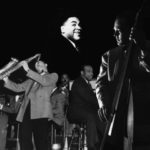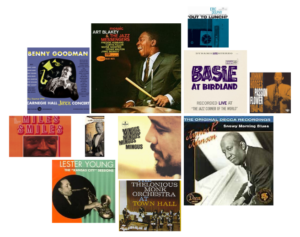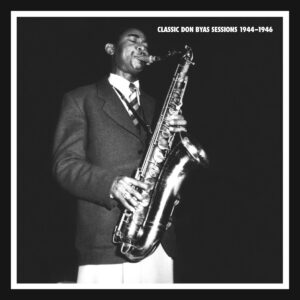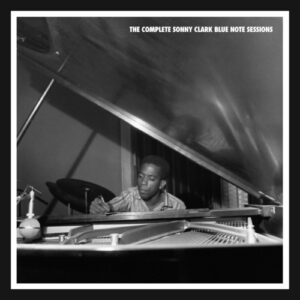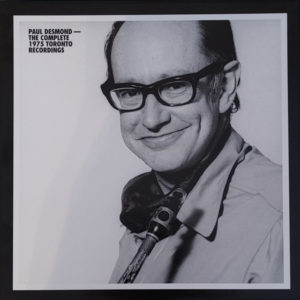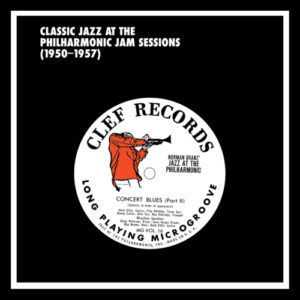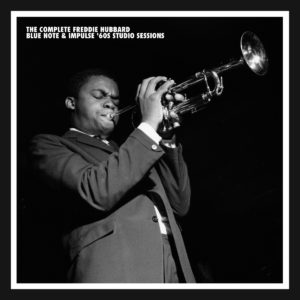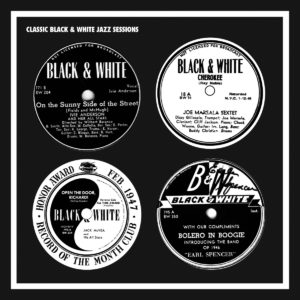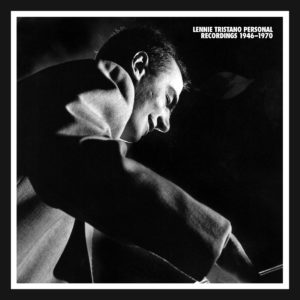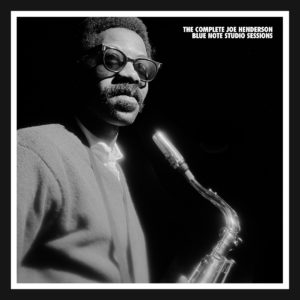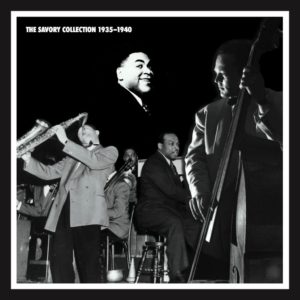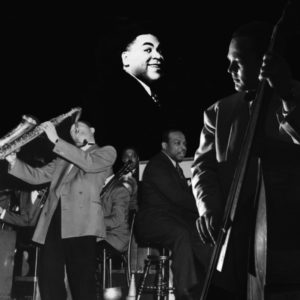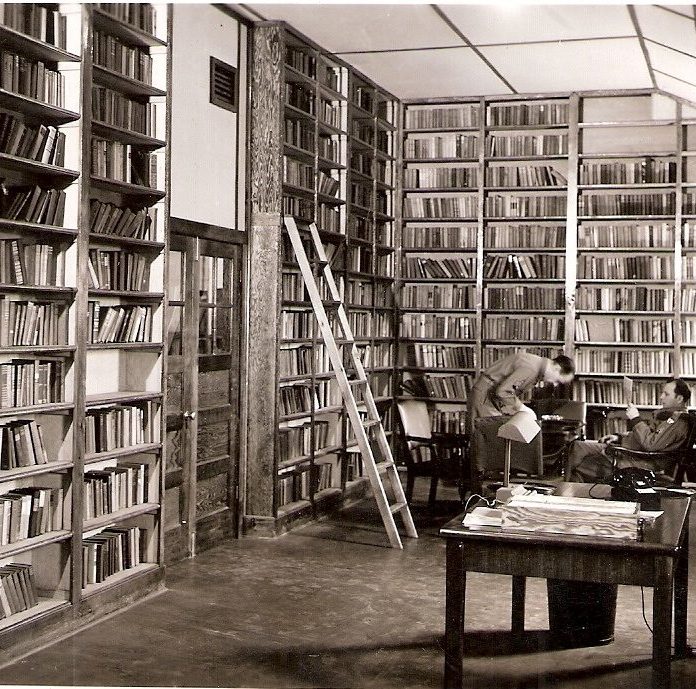
Recommended
Jazz journalism, biographies and photographic archives have improved measurably in the past 60 years and set off a bonanza of well-done books on jazz from every vantage point. We have combed thru Amazon for the greatest jazz books that are currently in-print and our recommendations are below.
If you click thru and purchase items on Amazon, we earn commissions. Thank you very much for your support!
Jazz Artists
History of Jazz
Jazz Photography
Jazz Artists
Pops: A Life of Louis Armstrong
by Terry Teachout
Louis Armstrong is widely known as the greatest jazz musician of the twentieth century. He was a phenomenally gifted and imaginative artist, and an entertainer so irresistibly magnetic that he knocked the Beatles off the top of the charts four decades after he cut his first record. Offstage he was witty, introspective, and unexpectedly complex, a beloved colleague with an explosive temper whose larger-than-life personality was tougher and more sharp-edged than his worshiping fans ever knew.
Satchmo: My Life in New Orleans (Da Capo Paperback)
by Louis Armstrong
“Bottles would come flying over the bandstand like crazy, and there was lots of just plain common shooting and cutting. But somehow all that jive didn’t faze me at all, I was so happy to have some place to blow my horn.” This raucous, rich tale of Louis Armstrong’s early days in New Orleans concludes with his departure to Chicago at twenty-one to play with his boyhood idol King Oliver.
Swing That Music
by Louis Armstrong
The first autobiography of a jazz musician, Louis Armstrong’s Swing That Music is a milestone in jazz literature. Armstrong wrote most of the biographical material, which is of a different nature and scope than that of his other, later autobiography, Satchmo: My Life in New Orleans Satchmo covers in intimate detail Armstrong’s life until his 1922 move to Chicago; but Swing That Music also covers his days on Chicago’s South Side with “King” Oliver, his courtship and marriage to Lil Hardin, his 1929 move to New York, the formation of his own band, his European tours, and his international success.
Satchmo: The Genius of Louis Armstrong
by Gary Giddins
Gary Giddins has been called “the best jazz writer in America today” (Esquire). Louis Armstrong has been called the most influential jazz musician of the century. Together this auspicious pairing has resulted in Satchmo, one of the most vivid and fascinating portraits ever drawn of perhaps the greatest figure in the history of American music. Available now at a new price, this text-only edition is the authoritative introduction to Armstrong’s life and art for the curious newcomer, and offers fresh insight even for the serious student of Pops.
Heart Full of Rhythm: The Big Band Years of Louis Armstrong
by Ricky Riccardi
The achievements of Louis Armstrong’s middle years possess some of the trumpeter’s most scintillating and career-defining stories. But the story of this crucial time has never been told in depth until now. Between 1929 and 1947, Armstrong transformed himself from a little-known trumpeter in Chicago to an internationally renowned pop star, setting in motion the innovations of the Swing Era and Bebop.
What A Wonderful World
by Ricky Riccardi
In this richly detailed and prodigiously researched book, jazz scholar and musician Ricky Riccardi reveals for the first time the genius and remarkable achievements of the last 25 years of Louis Armstrong’s life, providing along the way a comprehensive study of one of the best-known and most accomplished jazz stars of our time.
Duke: A Life of Duke Ellington
by Terry Teachout
As the biographer of Louis Armstrong, Terry Teachout is uniquely qualified to tell the story of the public and private lives of Duke Ellington. A semi-finalist for the National Book Award, Duke peels away countless layers of Ellington’s evasion and public deception to tell the unvarnished truth about the creative genius who inspired Miles Davis to say, “All the musicians should get together one certain day and get down on their knees and thank Duke.”
Beyond Category: The Life And Genius Of Duke Ellington
by John Edward Hasse
Beyond Category, the first biography to draw on the vast Duke Ellington archives at the Smithsonian Institution, recounts his remarkable career: his childhood in Washington, D.C., and his musical apprenticeship in Harlem; his long engagement at the Cotton Club; the challenging years of the depression; his tours to Europe and into America’s deep South, where he helped lower racial barriers; the postwar years when television and bebop threatened to eclipse the big bands; the 1956 Newport Jazz Festival; and his collaborations with Billy Strayhorn, Johnny Hodges, and Ella Fitzgerald.
Weather Bird: Jazz at the Dawn of Its Second Century
by Gary Giddins
Gary Giddins’s Weather Bird is a brilliant companion volume to his landmark in music criticism, Visions of Jazz, winner of the National Book Critics Circle Award in Criticism. More then 140 pieces, written over a 14-year period, are brought together for the first time in this superb collection of essays, reviews, and articles. Weather Bird is a celebration of jazz, with illuminating commentary on contemporary jazz events, today’s top musicians, the best records of the year, and on leading figures from jazz’s past.
Thelonious Monk: The Life and Times of an American Original
by Robin Kelley
The first full biography of legendary jazz musician Thelonious Monk, written by a brilliant historian, with full access to the family’s archives and with dozens of interviews. Now updated with an afterword for Monk’s 2017 centennial.
Coltrane: The Story of a Sound
by Ben Ratliff
John Coltrane left an indelible mark on the world, but what was the essence of his achievement that makes him so prized forty years after his death? What were the factors that helped Coltrane become who he was? And what would a John Coltrane look like now–or are we looking for the wrong signs?
John Coltrane: His Life and Music (The Michigan American Music Series)
by Lewis Porter
John Coltrane was a key figure in jazz, a pioneer in world music, and an intensely emotional force. This biography presents interviews with Coltrane, photos, genealogical documents, and musical analysis that offers a fresh view of Coltrane’s genius. It explores the events of Coltrane’s life and offers an insightful look into his musical practices.
A Love Supreme: The Story of John Coltrane’s Signature Album
by Ashley Kahn
Ashley Kahn tells the story of the genesis, creation, and aftermath of this classic recording. Featuring interviews with more than one hundred musicians, producers, friends, and family members; unpublished interviews with Coltrane and bassist Jimmy Garrison; and scores of never-before-seen photographs, A Love Supreme balances biography, cultural context, and musical analysis in a passionate and revealing portrait.
Miles
by Miles Davis
Miles: The Autobiography, like Miles himself, holds nothing back. He speaks frankly and openly about his drug problem and how he overcame it. He condemns the racism he encountered in the music business and in American society generally. And he discusses the women in his life. But above all, Miles talks about music and musicians, including the legends he has played with over the years: Bird, Dizzy, Monk, Trane, Mingus, and many others.
Kind of Blue: The Making of the Miles Davis Masterpiece
by Ashley Kahn
Now, for the first time, Ashley Kahn takes us into the studio to witness the creation of an album that still thrills with its deceptively simple tunes. Using eyewitness accounts and newly discovered documents, Kahn traces Miles’s move from bop to modal jazz, re-creates the sessions using master tapes (weighing in on fragmentary takes and the dispute about composers), and follows the rise of the album from its contemporary reception to its transformation into a cultural landmark through conversations with those who were there.
Sophisticated Giant: The Life and Legacy of Dexter Gordon
by Maxine Gordon
Sophisticated Giant presents the life and legacy of Dexter Gordon, one of the major innovators of modern jazz. In a context of biography, history, and memoir, Maxine Gordon has completed the book that her late husband began, weaving his “solo” turns with her voice and a chorus of voices from past and present. Reading like a jazz composition, the blend of research, anecdote, and a selection of Dexter’s personal letters reflects his colorful life and legendary times. It is clear why the celebrated trumpet genius Dizzy Gillespie said to Dexter, “Man, you ought to leave your karma to science.”
Beneath the Underdog: His World as Composed by Mingus
by Charles Mingus
Bass player extraordinaire Charles Mingus, who died in 1979, is one of the essential composers in the history of jazz, and Beneath the Underdog, his celebrated, wild, funny, demonic, anguished, shocking, and profoundly moving memoir, is the greatest autobiography ever written by a jazz musician.
The History of Jazz
The World of Swing: An Oral History of Big Band Jazz
by Stanley Dance
Now available for a new generation of swing enthusiasts, reissued to coincide with the release of “The World of Swing” CD from Columbia/Legacy, this monumental history of big band jazz, documented through interviews with forty leading musicians, has been updated with a new introduction and discography by Dan Morgenstern.
Visions of Jazz: The First Century
by Gary Giddins
Visions of Jazz: The First Century offers seventy-nine chapters illuminating the lives of virtually all the major figures in jazz history. From Louis Armstrong’s trumpet playing to Sarah Vaughan’s operatic crooning, and from the swinging elegance of Duke Ellington to the pioneering experiments of Ornette Coleman, jazz critic Gary Giddins continually astonishes the reader with his unparalleled insight. Writing with the grace and wit that have endeared his prose to Village Voice readers for decades.
Jazz
by Gary Giddins & Scott Deveaux
In this vivid history of jazz, a respected critic and a leading scholar capture the excitement of America’s unique music with intellectual bite, unprecedented insight, and the passion of unabashed fans. Emphasizing its African American roots, Jazz traces the history of the music over the last hundred years. From ragtime and blues to the international craze for swing, from the heated protests of the avant-garde to the radical diversity of today’s artists, Jazz describes the travails and triumphs of musical innovators struggling for work, respect, and cultural acceptance set against the backdrop of American history, commerce, and politics. With vibrant photographs by legendary jazz chronicler Herman Leonard,
The History of Jazz
by Ted Gioia
Ted Gioia’s History of Jazz has been universally hailed as a classic–acclaimed by jazz critics and fans around the world. Now Gioia brings his magnificent work completely up-to-date, drawing on the latest research and revisiting virtually every aspect of the music, past and present.
DownBeat – The Great Jazz Interviews: A 75th Anniversary Anthology
by Frank Alkyer
(Book). Culled from the DownBeat archives includes in-depth interviews with literally every great jazz artist and personality that ever lived! Features classic photos and magazine covers from DownBeat ‘s vast archives. In honor of its 75th anniversary, DownBeat ‘s editors have brought together in this one volume the best interviews, insights, and photographs from the illustrious history of the world’s top jazz magazine, DownBeat . The Great Jazz Interviews delivers the legends of jazz, talking about America’s music and America itself, in their own words.
Rhythm-a-ning: Jazz Tradition And Innovation
by Gary Giddins
In a companion to his collections Riding on a Blue Note and Faces in the Crowd, Gary Giddins has assembled a mosaic of pieces that provide an essential guide to the jazz world. Moving with ease from sweeping surveys of jazz history to precise, vivid assessments of individual performers including Thelonius Monk, the Marsalis brothers, Ornette Coleman, and David Murray, Giddins demonstrates once again why he is lauded as “the best jazz critic now at work” (Newsweek).
Riding On A Blue Note: Jazz And American Pop
by Gary Giddins
Gary Giddins, winner of the 1998 National Book Critics Circle Award, has a following that includes not only jazz enthusiasts but also pop music fans of every stripe. Writing here in a lyrical and celebratory style all his own, Giddins dazzlingly shows us among many other things how performers originally perceived as radical (Bing Crosby, Count Basie, Elvis Presley) became conservative institutions . . . how Charlie Parker created a masterpiece from the strain of an inane ditty . . . how the Dominoes helped combine church ritual with pop music . . . and how Irving Berlin translated a chiaroscuro of Lower East Side minorities into imperishable songs.
Glorious Days and Nights: A Jazz Memoir
by Herb Snitzer
Glorious Days and Nights is a personal account of the fifty-year career of jazz photographer Herb Snitzer, with a special focus on his years in New York City from 1957 to 1964. A photojournalist for Life, Look, and Fortune, Snitzer was the photo editor and later associate editor of the influential jazz magazine Metronome. During the 1960s, politics, race, and social strife and unrest swirled in Snitzer’s life as a working artist. But throughout the bus boycotts, demonstrations, civil and racial unrest, what remained constant for him was jazz.
Hear Me Talkin’ to Ya: The Story of Jazz As Told by the Men Who Made It
by Nat Shapiro
“Music is your own experience, your thoughts, your wisdom. If you don’t live it, it won’t come out of your horn.” — Charlie Parker
“What is jazz? The rhythm — the feeling.” — Coleman Hawkins
“The best sound usually comes the first time you do something. If it’s spontaneous, it’s going to be rough, not clean, but it’s going to have the spirit which is the essence of jazz.” — Dave Brubeck
Here, in their own words, such famous jazz musicians as Louis Armstrong, King Oliver, Fletcher Henderson, Bunk Johnson, Duke Ellington, Fats Waller, Clarence Williams, Jo Jones, Jelly Roll Morton,
The Jazz Life (A Da Capo paperback)
by Nat Hentoff
Nat Hentoff’s The Jazz Life explores the social, economic, and psychological elements that make up the context of modern jazz. Among the jazz greats whose lives and work are discussed are Count Basie, Charles Mingus, John Lewis, Miles Davis, Thelonius Monk, and Ornette Coleman. Written with intelligence, passion, and wit, this jazz classic is of immense importance to anyone wanting a better understanding of the jazz—or indeed our American life.
The Blue Note Label: A Discography, Revised and Expanded (Discographies) 2nd Edition
by Michael Cuscuna
The Blue Note label is one of the most widely known and respected producers of jazz music in the world. This reference book, by noted discographer Michel Ruppli and Blue Note producer Michael Cuscuna, expands upon the previous edition and includes comprehensive documentation of personnel, recording locations and dates, and master and issue numbers for every recording made or issued by the label from its inception through the present day.
Sittin’ In: Jazz Clubs of the 1940s and 1950s
by Jeff Gold
A rare collection of more than 200 full-color and black-and-white souvenir photographs and memorabilia that bring to life the renowned jazz nightclubs of the 1940s and 1950s, compiled by Grammy Award-winning record executive and music historian Jeff Gold and featuring exclusive interviews with Quincy Jones, Sonny Rollins, Robin Givhan, Jason Moran, and Dan Morgenstern.
Conversations in Jazz: The Ralph J. Gleason Interviews Paperback – September 8, 2020
by Ralph J. Gleason
During his nearly forty years as a music journalist, Ralph J. Gleason recorded many in-depth interviews with some of the greatest jazz musicians of all time. These informal sessions, conducted mostly in Gleason’s Berkeley, California, home, have never been transcribed and published in full until now.
Jazz Photography
The Jazz Image: Masters of Jazz Photography
by Lee Tanner
The great improvisational American jazz musicians of the mid-20th century inspired a generation of photographers to develop a looser, moodier style of visual expression. That evocative approach is on striking display in The Jazz Image. Covering six decades of performers from Louis Armstrong and Duke Ellington to John Coltrane and Miles Davisthis unique collection is as much a comprehensive catalogue of jazz greats as it is a salute to the photographers who captured them.
Jazz Images by Francis Wolff
by Jordi Soley
This book compiles more than 150 Francis Wolff photos of jazz stars, most of which are published here for the very first time. It also includes a special introduction by renowned music historian Ashley Kahn. “For two decades, Francis Wolff showcased jazz photography by photographing every jazz session that Blue Note Records made. He not only preserved a major part of jazz history, but with his remarkable eye, he captured amazing candid portraits of great artists that reveal the joy and intensity of jazz at the point of creation.” Michael Cuscuna
William Claxton. Jazzlife (Multilingual Edition) (Multilingual) Hardcover – September 22, 2016
by Joachim E. Berendt
In 1960, photographer William Claxton and noted musicologist Joachim Berendt traveled the United States hot on the trail of jazz. Through music halls and marching bands, side streets and subways, they sought to document this living, breathing, beating musical phenomenon that enraptured America across social, economic, and racial lines.
The Jazz Image: Masters of Jazz Photography
by Lee Tanner
The great improvisational American jazz musicians of the mid-20th century inspired a generation of photographers to develop a looser, moodier style of visual expression. That evocative approach is on striking display in The Jazz Image. Covering six decades of performers from Louis Armstrong and Duke Ellington to John Coltrane and Miles Davis, this unique collection is as much a comprehensive catalogue of jazz greats as it is a salute to the photographers who captured them.

